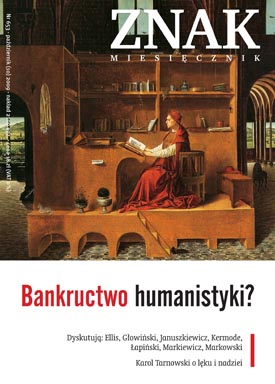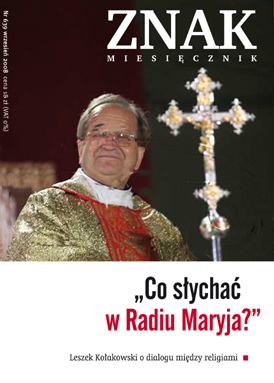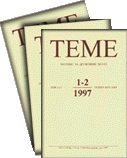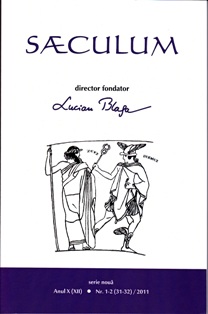
We kindly inform you that, as long as the subject affiliation of our 300.000+ articles is in progress, you might get unsufficient or no results on your third level or second level search. In this case, please broaden your search criteria.


The essay analyses the connection between wisdom and old age as depicted in the Rule of Saint Benedict. In archaic societies the wisdom of the old appears as an unquestionable value. On taking a closer look at the Chinese tradition, Francois Jullien draws the conclusion that wisdom presupposes capability for coexisting. The author also examines the question of who and for what reason is expected to be wise by the Rule and which role the elderly can play in this matter.
More...
The article focuses on the background of an early Christian debate on the canonicity of Susanna. It discussed the impact of the Old Testament canon on this archetypal story, the differences between its two extant Greek versions and their possible reasons, as well as the arguments of Origen and Africanus in favour and against the inspired nature of the story.
More...
The Deuteropauline Letters harmonize the hellenistic and Judio-Christian organizational model, The rather heavy emphasis on the – possibly fictious – ordination of Timothy and Titus by Paul proves that, at the end of the 1st century, the Church saw fidelity to apostolic teaching ensured by continuity of those in charge. Yet the improbability of Timothy and Titus´ immediate ordination by the Apostle, along with the equivalent meaning of episkopos and presbyteros, proves that theological argumentation in favour of the apostolic succession prevails over historical evidence. These two insights challenge all Christian traditions to re-evaluate both criticism of apostolic succession as well as depreciation of ministry in churches that have not retained Episcopal succession
More...
This paper examines the possibilities of applying categories of fundamentalism to some documents of the magisterium of the Roman Catholic Church. It re-examines the theological assumptions of Pope Pius IX (1846-1878), primarily his encyclical Quanta Cura, which contains the annex Syllabus Errorum, a list of misconceptions of 80 philosophical directions, liberal and communistic ideology, as well as the new social order, which had been formed. The paper proposes a hypothesis that the ideological assumptions of the analyzed document, although not fundamentalist per se, as they did not have a social articulation, can be interpreted as firm, unwavering, and real incitement to fundamentalism. Thus, it directly indicates the universal and current nature of the problem of religious fundamentalism.
More...











The thorough knowledge of India, in the context of the revival of scientific and religious interest for the whole Oriental ideology and way of life, cannot be complete without a direct and profound personal experience of the local religious forma and practices. Emphasizing on Eliade’s personal experience and effort for understanding the Indian culture, this article aims at reviewing some of the most salient magical and religious Indian beliefs, including yoga, as it is conceived by Eliade himself not only as a philosophical system, but as a practical technique for achieving autonomy, freedom and immortality.
More...
Starting from the dogmatic formulation of the Synod of Chalcedon, and correlating references to the Holy Fathers (John of Damascus, Maximus the Confessor, Gregory of Nyssa, Gregory of Nazianzus, Gregory Palamas, Leontius of Byzantium, Irenaeus of Lyon, Theodor of Studion, Athanasius of Alexandria, Cyril of Alexandria, Leo the Great, Cabasilas) with modern theology (Stăniloae, Lossky, Barth, Schmemann, Brunner, H. U. von Balthasar, O. Clément, Nissiotis), this paper highlights the essential complementarity of the Chalcedonian dogma. It analyses the implications of the complementarity of the two natures – divine and human – inconfusedly joined within the unique Hypostasis of the Son of God incarnated. It discusses the relevance of the Chalcedonian definition of man as a “bipolar” person, realised in the communion of the divine with the human (on the verticality and the horizontality of existence), both for theology, and as a basis for ecumenical dialogue. The divine kenosis grounds the bipolarity of the human as a theandric vocation: we are created in the “image of the Image”, in order to achieve the likeness unto Him. Hence the specificity of Orthodox anthropology – which is not merely that of man, but of the Man- God, of God’s humanity.
More...